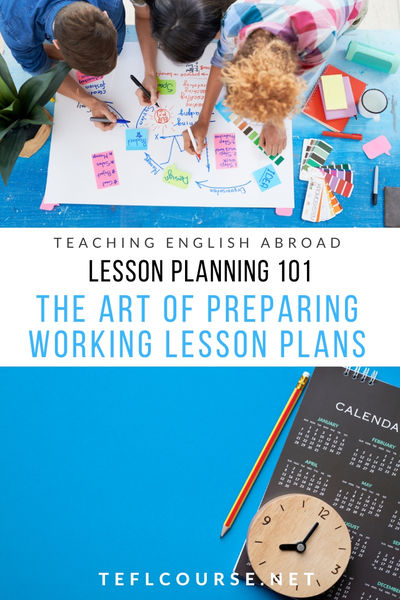The Art of Preparing Working Lesson Plans

Doing up lesson plans for my up and coming TEFL classes is something that I am quite excited about. I suppose it is because I see an opportunity for creativity and that gets my juices flowing. I love the engage, study and activate model that was taught to us, both in the TEFL course itself as well as in this course on teaching business English lessons to adults. I would like to share some ideas that I have reaped from this course on how I would prepare a lesson plan for the to engage, study and activate methodology.
Table of Contents
Applying New Information on Practice
Do you want to teach English abroad? Take a TEFL course!
This post was written by our TEFL certification graduate Bonnie B. Please note that this blog post might not necessarily represent the beliefs or opinions of ITTT.
Engagement
The engaging portion of the lesson is to be an opportunity to break the ice and get the students thinking and speaking in English. I would use this opportunity for both small chats, such as "How was your day?", "How's your family?", or even comments on the weather. From there I would move into a conversation that would elicit some of the target languages for our lesson. I like the idea of making this free-flowing and yet targeted conversation fun and purposeful. To that end I would look for newspaper or magazine articles, business letters, business emails, resumes, etc. to draw vocabulary from. Reading something authentic seems, to me, to have more purpose and be more relatable to business professionals.

Also Read: Can I choose where I teach English abroad?
Giving New Information
After engaging the students, I would then move into the study portion of our lesson. This involves using worksheets, fill in the gaps exercises, word scrambles and the like. To me, this is the seatwork portion of the class. This can be done in pairs or small groups. One of the main things I reaped from the course was the importance of making sure students will understand what is being asked of them on the worksheets given, so taking time to demonstrate or work through a question or two with the group before handing out the worksheets themselves is very important and beneficial. I also realized that simply asking if the students understand is not a good way of finding out if they genuinely do understand. It's better to ask more specific questions or ask them to demonstrate whether they understand or not. I look forward to making fun and professional study sheets and feel that I would excel at this.
Also Read: 4 Activities for Teaching Future Simple in the ESL Classroom
Applying New Information on Practice
From the study phase, we would move into the activated portion of the lesson. This is the fun part! This involves putting the learned target language into real workplace situations and practicing using it. That could mean the students are doing role plays (interviews, employee/employer conversations, etc.), writing a business letter or email in pairs, putting together a presentation or a myriad of other activities. I would hope that my classroom would find these activities fun and lighthearted as well as safe places to practice their new vocabulary before trying to use it out in the everyday work world.

Also Read: 5 Creative Writing Activities for the ESL Classroom
Points to Remember
From time to time it is appropriate to mix up the lesson and bounce around between the study and activate phases. An example of this would be, to begin with, and engage, move to study, then to activate, back to study and ending with another activation. This makes the lessons unpredictable and therefore more fun! The more important part is to always begin with an engage phase and always finish with an activation. This is important because the students need a few minutes to 'warm-up' to English and leaving the class with a smile after a fun activation keeps them coming back.
A few side notes about things that I found worth noting when it comes to lesson planning would be the importance of the date, the number of students, possible difficulties in the language, teacher goals and so on that are written out. I hadn't put much thought into why these things would be important. I now understand that being able to look back and reference past lessons will help save time not repeating all the work of preparing the same lesson again. It is also good practice for unexpected emergencies that arise so a substitute teacher can take over the class and carry on with exactly what you had planned. These things will help each of the phases listed above to succeed for myself and my students.
Do you want to teach English abroad? Take a TEFL course!
The only thing left for me to do is secure a job teaching ESL and begin preparing my lessons for my students. How exciting that would be! I just can't wait.
Apply now & get certified to teach english abroad!
Speak with an ITTT advisor today to put together your personal plan for teaching English abroad.
Send us an email or call us toll-free at 1-800-490-0531 to speak with an ITTT advisor today.
Related Articles:
- Differences between Young Learners and Adult Learners in the TEFL Environment
- How Learning A Foreign Language Made Me a Better ESL Teacher
- The 5 Best Places to Learn French When Teaching English Abroad
- Top 5 Skills Teachers Need To Set Their Students Up For Success
- 4 Super Easy Tips for Teaching Vocabulary to Young Learners
- All the Documents You Will Need to Teach English Abroad




